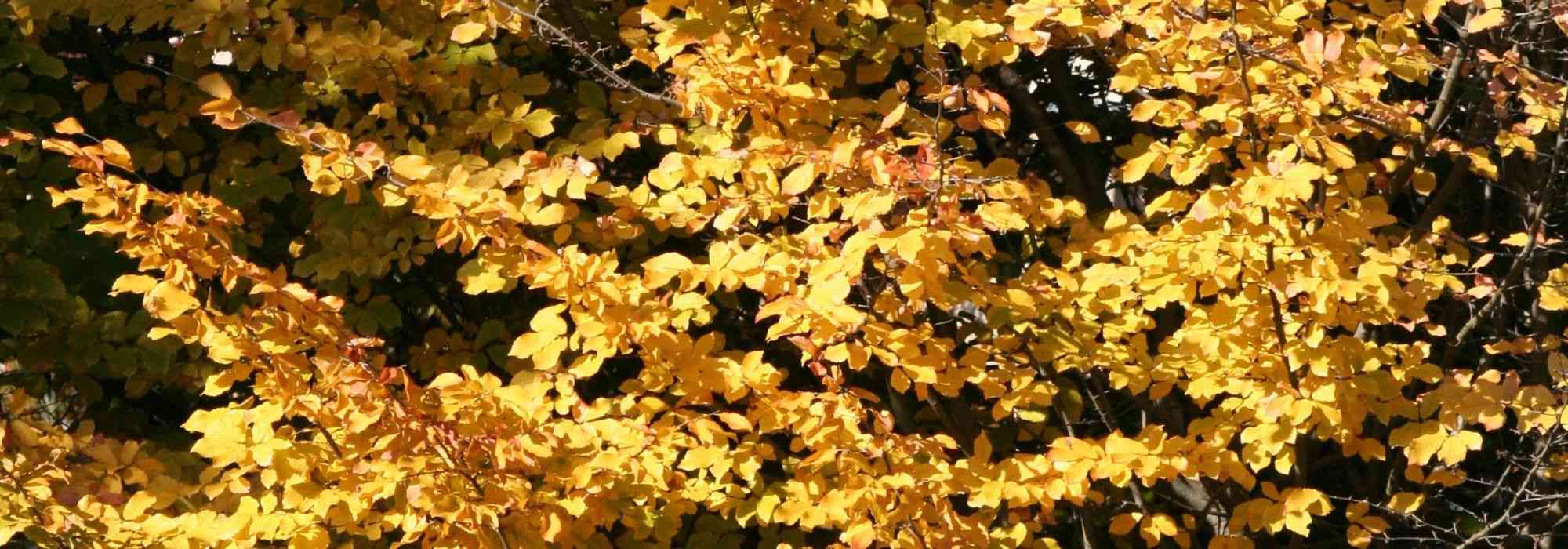
Parrotia persica, Ironwood: planting, pruning, and maintenance
Contents
Parrotia in a nutshell
- Persian Parrotia is a beautiful ornamental tree with sumptuous and varied autumn colours
- Its extremely hard wood has earned it the nickname “iron tree“
- This small tree grows in any good soil rich in humus, even clayey, as long as it remains cool
- Very hardy, Persian Beech does not appreciate high heat and drought
- It can be planted as a specimen, within a free hedge, or in a grove among other bushes with beautiful autumn colours, and even in pots for certain varieties
The word from our expert
“Iron tree”, “Persian beech”, “Parrot tree”… The nicknames of this little-known tree are plentiful! Brilliant in multiple colours in autumn, with foliage turning green, yellow, red, and orange, it also provides presence in the garden during other seasons, thanks in particular to its unique habit, broader than tall. The branches, as they age, seem to bend under the weight of the years, and the bark gradually exfoliates to reveal yellowish patches, giving it an extra charm during the colder months.
The flowering, although discreet for the gardener, is far from unnoticed by the first bees and bumblebees attempting to venture out early in spring. Indeed, the flowers are melliferous and highly nourishing at a time when food for insects is severely lacking.
With unwavering hardiness, free from disease, practically maintenance-free, and accommodating all good fresh, well-drained soils, the Persian ironwood truly deserves to be planted more in our gardens. It fears only two things: extreme heat and lack of water! So, forget it for the southern regions.
With a relatively slow growth rate, the Parrotia persica can be planted within a free-form hedge or in a small grove among other bushes with beautiful autumn colours. But it is when isolated, in the middle of a well-cleared space, that it can offer you the most stunning display in all its autumnal glory, becoming undoubtedly one of the focal points of your garden. Note that there are now varieties that adapt very well to pot cultivation.
Description and Botany
“`html
Botanical data
- Latin name Parrotia persica
- Family Hamamelidaceae
- Common name Persian Ironwood or Persian Beech, Iron Tree or Iron Wood, Parrot Tree
- Flowering February-March
- Height 8 metres
- Exposure full sun to partial shade
- Soil type deep, rich and cool
- Hardiness -25° C
The Persian Ironwood (Parrotia persica) belongs to the Hamamelidaceae family and is now the only species in the Parrotia genus, although several varieties exist. This small tree or large bush is native to the mixed forests of northern Iran and eastern Caucasus, hence its species name “persica,” but it is becoming rare in its natural habitat. It is called “iron tree” or “iron wood” due to the hardness of its wood. Another of its (many) nicknames is “parrot tree” because of the vibrant colours of its foliage in autumn. This shrub can also be found in older texts under the name Hamamelis persica.
The iron tree is a large shrub or small tree measuring between 5 to 10 m high in cultivation, but it can reach up to 20 m in its natural range. It has a stout trunk and a very spreading habit, wider than it is tall (often nearly 10 metres wide). The branches of older specimens incline towards the ground. Its root system is significant, and the tree even tends to produce suckers.
The bark is grey but exfoliates over time to reveal yellowish areas, somewhat like that of the plane tree. The young shoots are green-brown with small hairs and very dark purple buds, which are slightly pubescent.
The deciduous foliage consists of ovate leaves about 8 cm long and glossy green in spring and summer (reddish at bud burst), but it gradually becomes very colourful in autumn with colours appearing simultaneously: green, yellow, orange, and crimson to purple red. The upper half of the leaf is bordered with rounded teeth, and the veins are prominent, somewhat resembling those of beech leaves. It is also nicknamed “Persian beech“.
The flowers are hermaphroditic, small, and petal-less, consisting of scarlet stamens surrounded by brown bracts. They appear directly on the branches at the end of winter (late February to early March) just before the leaves emerge. Although insignificant, the flowers are highly melliferous and provide a good food source for early foragers emerging from winter. The fruit resulting from fertilization resembles a walnut and consists of a fluffy capsule with 4 chambers. The seeds are light brown.
 Parrotia persica: flowering, spring foliage followed by autumn foliage, beautiful bark
Parrotia persica: flowering, spring foliage followed by autumn foliage, beautiful bark
The Parrotia reaches sexual maturity after about ten years. It is a relatively slow-growing tree, gaining only about 30 cm per year, but it can easily live for two hundred years.
Please note: there is now only one species in the Parrotia genus. Previously, it included others such as Parrotia jacquemontiana, which has become Parrotiopsis jacquemontiana, and Parrotia subaequalis, which has become Shaniodendron subaequalis.
“`
Our favourite varieties
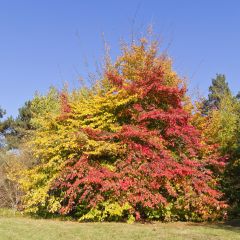
Parrotia persica - Persian Ironwood
- Flowering time March to May
- Height at maturity 8 m
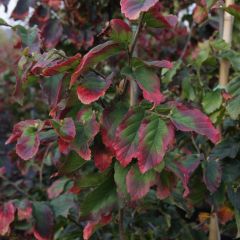
Parrotia persica Vanessa - Persian Ironwood
- Flowering time March to May
- Height at maturity 6,50 m
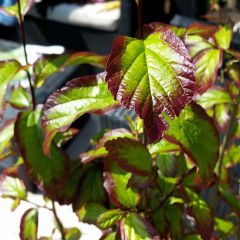
Parrotia persica Persian Spire - Persian Ironwood
- Flowering time March to May
- Height at maturity 7 m
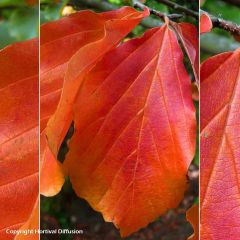
Parrotia persica Bella - Persian Ironwood
- Flowering time March to May
- Height at maturity 10 m
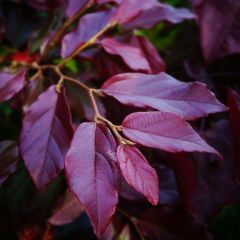
Sycoparrotia semidecidua Purple Haze
- Flowering time March to May
- Height at maturity 4 m
Discover other Parrotia - Persian Ironwood
View all →Available in 1 sizes
Available in 2 sizes
Available in 2 sizes
Available in 1 sizes
Available in 2 sizes
Available in 2 sizes
Planting Parrotia
Where to Plant the Parrotia?
The Persian Parrotia is a very hardy tree, as it withstands frosts of up to -25 °C. However, they dislike heat and fear drought, although they are quite resilient once well established. Therefore, it is best to avoid planting them south of the Loire, as the climate is not suitable for them.
This tree prefers rich, deep, and acidic soils (the autumn colours are much more beautiful in such conditions) but can tolerate calcareous soil. It also needs the soil to remain cool, yet well-drained. It can easily adapt to clayey soils.
The ideal situation is a sunny exposure, but not scorching, or partial shade, protected from drying winds.
It is important to allow ample space for this tree, which tends to spread significantly: at least 10 metres wide when mature, unless you choose a variety with a narrower habit like ‘Vanessa’ or ‘Persian Spire’.
When to Plant?
The best planting period is in autumn (November-December). You can also plant in early spring if the soil is not frozen.
How to Plant?
- Soak the pot of your new Parrotia in a bucket of water for a few minutes to thoroughly rehydrate the root ball
- Dig a hole twice as deep and wide as the volume of the tree’s root ball
- Throw a few handfuls of well-rotted compost into the bottom of the hole
- If your soil is heavy, you can add a bit of sand or even some gravel to improve drainage
- Begin to gently loosen the roots.
- Place the remaining root ball at the bottom of the hole, spreading the roots well
- Fill the hole with the excavated soil, previously loosened
- Gently firm the soil around the tree with your hands (not with your feet!)
- Water at the base with a 10-litre watering can to reduce the risk of “air pockets” between the roots and the soil
- Apply mulch to protect the young tree from drought or plant some small groundcover plants (Creeping Bugle, Sweet Woodruff, Glechoma, Geranium macrorrhizum, …).
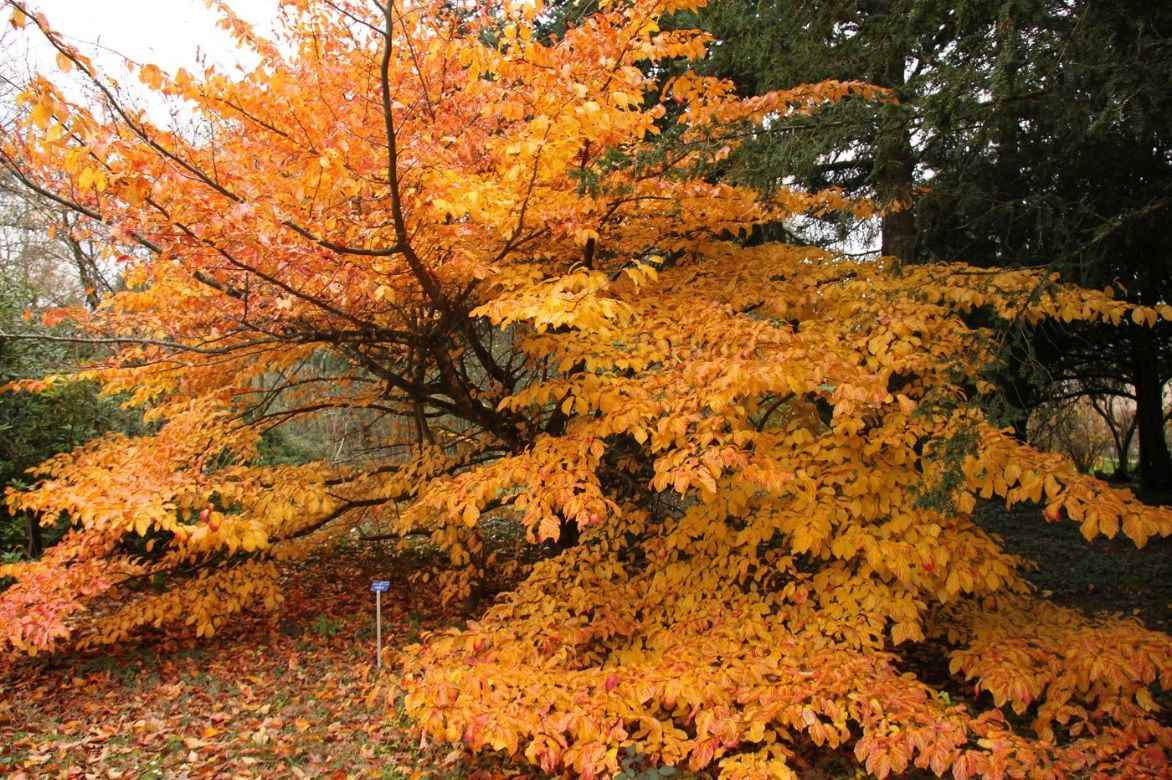
Maintenance, pruning and care
Maintenance
Very little maintenance is required for parrotias. Mulching is highly appreciated, especially during the first few years, to maintain freshness and moisture in summer.
During dry periods, it is important to check if your Persian Parrotia is suffering from a lack of water.
Pruning
No pruning is really necessary. If needed, you can remove, just before the resumption of growth (February), any weak, dead branches or those that cross each other to maintain a harmonious and healthy habit.
Possible Diseases
This bush or small tree does not suffer from any diseases and is not attacked by any pests.
Multiplication
Sowing
Sowing is difficult and lengthy, as the seeds take 18 months to germinate with a very low germination rate.
Layering
In fact, the tree layers naturally. Layering by bending is an easy operation to carry out in March-April. Bend some nice, flexible shoots down to the ground. Prior to this, split the bark of these shoots for a few centimetres and to a depth of 2 mm. Bury your layers at the level of the split part and secure it with a stainless steel “U” peg. Keep it moist and wait at least two years before separating the layer from the mother plant. Gently remove it once it has rooted, then pot it up.
Propagation by Cuttings
In June, you can attempt propagation by cuttings of semi-ripe shoots under mist. Take young shoots and trim the heel at an angle. It is advisable to remove the leaves, keeping only one to reduce evapotranspiration. The substrate should be light; a mix of 50% seed compost and 50% sand will be perfect. Keep it moist, but not overly so. Unrooted cuttings do not “drink” and excessive moisture will lead to rot. The first roots will appear by autumn, but it is better to wait until spring to repot. Wait at least until the following autumn, or better yet, the following year to plant in the ground.
Grafting
The Parrotia is grafted onto the Hamamelis: this is normal, as they belong to the same botanical family. This technique should be reserved for specialists (especially given the price of Hamamelis…). Just know that if you want to attempt it, the method used is the “cleft” grafting, which is carried out in February.
Associate Parrotia with the garden
In a Grove of Colourful Foliage in Autumn
If you ask gardeners what their favourite season is, some will say spring, but many will also reply autumn. Autumn in the garden and in nature is indeed a magical season. If you love the warm colours of foliage during this time, why not create a grove of bushes renowned for their autumn hues? The Parrotia persica ‘Persian Spire’ takes up little space in width, making it perfect to insert into a grove alongside a Liquidambar styraciflua ‘Gum Ball’, a variety with a compact growth habit and multicoloured foliage in autumn. A Fothergilla major will complete the picture while also enhancing spring with its charming flowering. If you are looking for another representative of the Hamamelidaceae family to accompany the Parrotia and Fothergilla, opt for a Witch Hazel. Like this lovely Hamamelis vernalis ‘Amethyst’ with its scarlet foliage in autumn followed by purple-pink winter blooms.
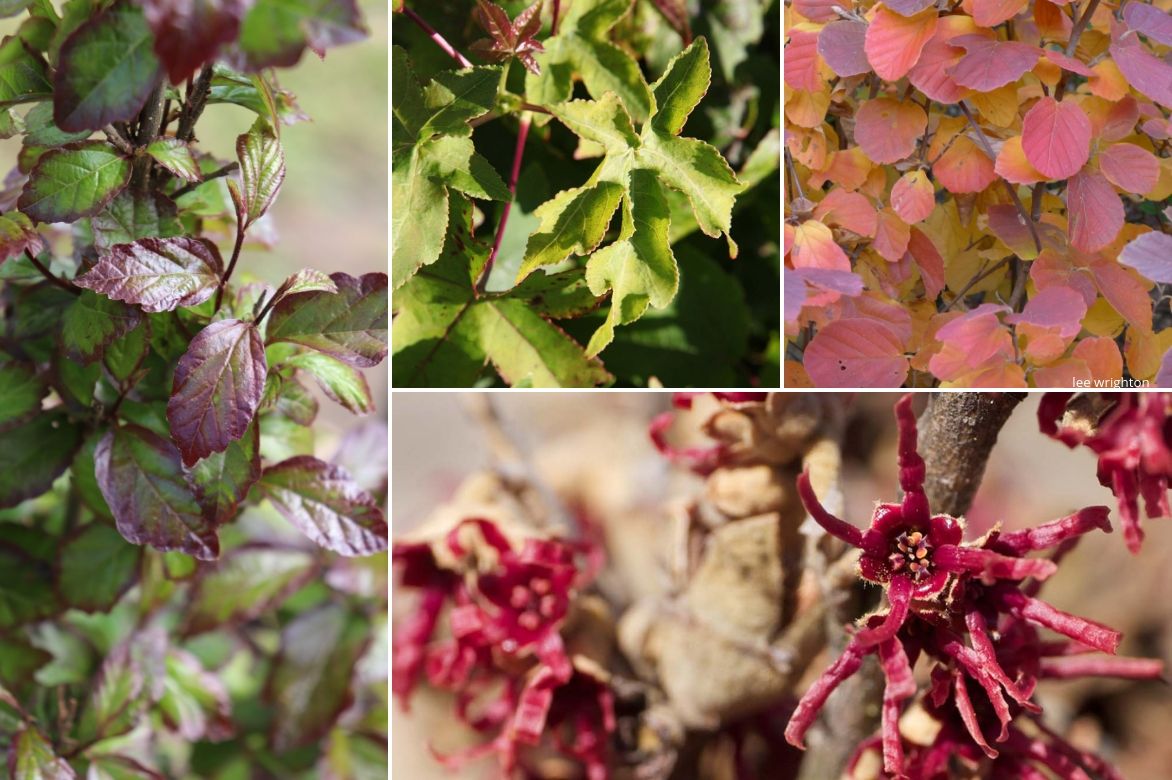
An example of a grove association: Parrotia persica ‘Persian Spire’, Liquidambar styraciflua ‘Gum Ball’ with its incredible autumn foliage, and Fothergilla major, to which you can add a Witch Hazel with stunning winter blooms like ‘Amethyst’
In a Free-Form Hedge of the “Four Seasons”
The Parrotia persica ‘Vanessa’ does not take up much space in width, making it ideal for a free-form hedge of shrubs coloured by foliage and flowering. To maintain year-round interest, you will need to play with spring and summer blooms, autumn foliage colours, and winter presence through colourful bark or unique habits, ensuring the Parrotia does not steal the show too often. The Amelanchier spicata is perfect in a free-form hedge: it is beautiful during flowering and bud burst in spring, and its foliage takes on lovely hues in autumn. For summer, a simple yet effective Buddleia davidii ‘Empire Blue’, a superb variety that blooms from July to September with long blue spikes. To complete the ensemble, you can abundantly plant all the decorative dogwoods with colourful wood and foliage that come your way. For instance: Cornus alba ‘Aurea’ with its golden foliage all season and bright red branches in winter, and Cornus sericea ‘Cardinal’ whose fresh green foliage eventually takes on reddish hues in autumn before also giving way to red wood in winter.
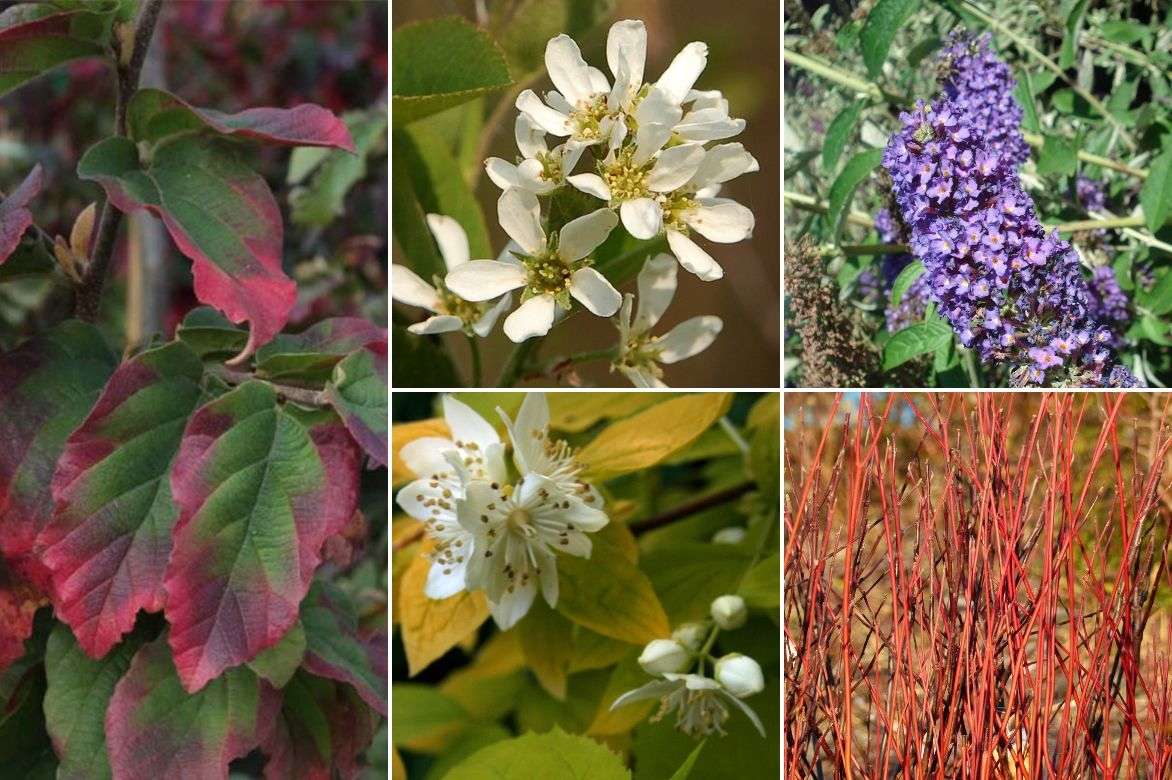
An example of an association in a four-season hedge: Parrotia persica ‘Vanessa’ with beautiful autumn colours, Amelanchier spicata which blooms in spring and is not lacking in autumn foliage, Buddleia davidii ‘Empire Blue’, Cornus alba ‘Aurea’ with golden foliage all season, and Cornus sericea ‘Cardinal’ interesting for its autumn colours and red stems in winter
In Isolation at the Centre of a Lawn
The typical species Parrotia persica takes up a bit of space in width over time (10 metres!), but it is also a very beautiful small tree to grow in isolation, allowing it to reach its full potential. Proudly standing at the centre of an open area in your garden, it will quickly become a focal point that will warm our hearts in autumn when it is covered in gold and fire. Moreover, it will provide beneficial shade to many beautiful plants. If the soil is sufficiently acidic, why not enhance its base with heathers, azaleas, or Pieris that will thrive in the shade of this beautiful tree.
→ Discover more association ideas with the Parrotia in our advice sheet!
Did you know?
- The genus name Parrotia comes from the name of its discoverer, the German naturalist F.W. Parrot.
- It is a melliferous plant that will attract pollinators at a crucial time of the season, the end of winter and the very beginning of spring.
- Parrotia persica was only introduced to Europe in 1841.
- Its vernacular name, iron tree, is inspired by its exceptionally hard wood.
- The wood of Parrotia has been used to create tools for over 2000 years.
Useful resources
- Discover our entire range of Persian Ironwoods from our online nursery.
- Explore our selection of Parrotia, Iron Tree: the 5 most beautiful varieties
- The flowering of Parrotia persica is subtle but very beautiful if you take the time to admire it.
- The Iron Tree is a marvel for small gardens, but it’s not the only one; discover our selection of 7 trees to adopt in a small garden.
- Learn more about Parrotia in Olivier’s video
Frequently asked questions
-
I have no space at home. Can I still accommodate a Parrotia?
Certainly, there are many varieties of Persian Parrotia with a narrow habit or very limited growth. For example, the 'Vanessa' or 'Persian Spire' varieties can even be grown in pots.
-
I live in the South of France. Is it possible to acclimatise a Persian Parrotia?
Parrotia persica does not appreciate heat or drought. It is therefore not recommended for this type of climate. If you are looking for a small tree with autumn presence for this region, consider the foliage of Cotinus or the flowering of Arbutus, for example.
- Subscribe!
- Contents
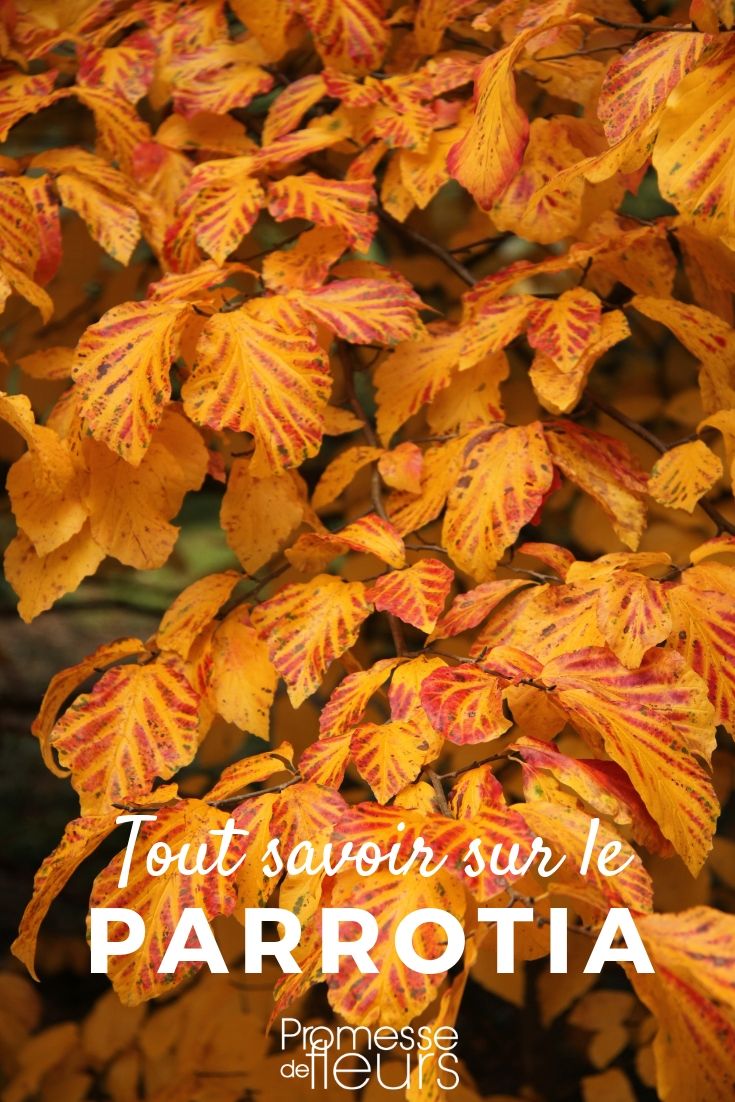





































Comments